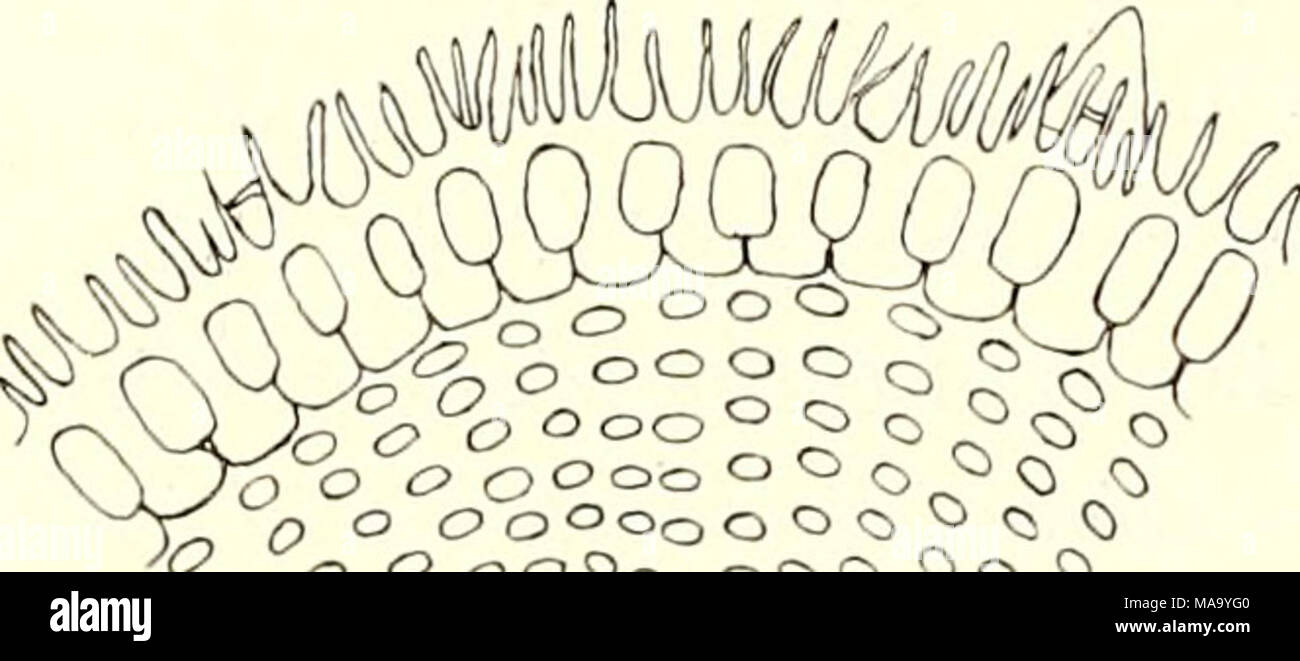. Echinoidea of the Swedish South Polar Expedition . io TIL MORTENSEN, (Schwed. Siidpolar-Exp. Also the pedicellariae afford some differences. In the specimen from St. 17 they are invested by an unusually thick skin, but otherwise the structure of the valves is the same as in the normal specimens; in the specimen from St. 22, on the other hand, the valves differ rather considerably from those of the normal specimens, the opening being broadly triangular with the lower edge almost or wholly straight (PI. XIII Fig. 9). On a closer examination I find that these spe- cimens show in their radioles

Image details
Contributor:
The Bookworm Collection / Alamy Stock PhotoImage ID:
MA9YG0File size:
14.3 MB (325 KB Compressed download)Releases:
Model - no | Property - noDo I need a release?Dimensions:
3371 x 1482 px | 28.5 x 12.5 cm | 11.2 x 4.9 inches | 300dpiMore information:
This image is a public domain image, which means either that copyright has expired in the image or the copyright holder has waived their copyright. Alamy charges you a fee for access to the high resolution copy of the image.
This image could have imperfections as it’s either historical or reportage.
. Echinoidea of the Swedish South Polar Expedition . io TIL MORTENSEN, (Schwed. Siidpolar-Exp. Also the pedicellariae afford some differences. In the specimen from St. 17 they are invested by an unusually thick skin, but otherwise the structure of the valves is the same as in the normal specimens; in the specimen from St. 22, on the other hand, the valves differ rather considerably from those of the normal specimens, the opening being broadly triangular with the lower edge almost or wholly straight (PI. XIII Fig. 9). On a closer examination I find that these spe- cimens show in their radioles a structure quite similar to that which I have described for Rliynchocidaris £/°oo° ° 5 ^ triplopora (Op. cit.). The curious tubes protruding 0~O o o00 ° 0 O ° O ^ ^0o°o^°°°°°°^qo%q through the thorns of the radioles are also found a°^°°o€°°°J*?, §^£ here, though not so strongly developed as in that °o°o° o°°°^>* species. In one case I have further found in a °° 0o°0 ° section of a radiole an organism* boring in the chalk matter, quite similar to that which I have described Fig. 3. Transverse section of radiole from frQm th&t species _ jn shorti T think ifc can scarcely a specimen of Ctenocidaris speciosa in- fested with Echinophycis. 5°'i. ^e doubted that these specimens are infested with EcJiinopJiyces, though I have, unfortunately, not found anything corresponding to the ''spores" found in RJiyncJiocidaris. The differences from the normal specimens occurring in these two specimens I must then suppose to be due to the reaction against the parasite. It is further worth noticing that genital pores have apparently not yet been developed in these specimens, though they have appeared in the normal specimen of 18.5 mm. But on the other hand these specimens show the curious feature of having a small opening in the median interambulacral line at the ambitus (PI. XIII Fig. 1). In view of the fact that in RJiyncJiocidaris the genital opening